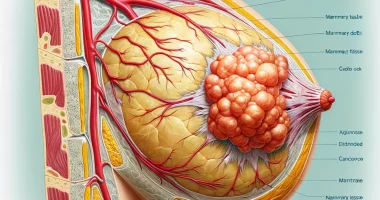Complex regional pain syndrome (CRPS)
General information
Complex regional pain syndrome is a clinical variant of neuropathic pain. It is a pathological condition in the form of chronic pain syndrome that develops after exposure to a damaging factor and is not limited to the zone of innervation of a single peripheral nerve. The manifestations of the disease are not proportional to the influencing factor.
Causes of complex regional pain syndrome
Complex regional pain syndrome includes the following components:
- complex (duration of pain syndrome, autonomic, inflammatory, motor, skin, and dystrophic changes);
- regional (most cases involve a specific area of the body, and the pain may extend beyond the site of the initial lesion);
- pain (pain can occur both spontaneously and under the influence of unconditional stimuli, usually not causing it, and abnormally hypersensitivity to stimuli);
Complex regional pain syndrome most commonly develops after a fracture of the distal forearm bones. Risk factors include the injury itself, immobilization of the limb, and central nervous system damage (brain neoplasms, stroke, craniocerebral trauma, meningitis, amyotrophic lateral sclerosis).
Patients under the influence of traumatic factors develop disorders in the peripheral and central nervous systems, inflammation, and oxidative stress. Reflex spasm of peripheral vessels occurs, contributing to the development of autonomic disorders. Patients’ extremities become cold and pale. Further peripheral vessels dilate, and the skin in the affected area becomes warm. Prolonged sympathetic disorders lead to a disorder of microcirculation: tissue nutrition and endothelial function are disturbed, and as a result, they receive less oxygen and nutrients, and acidosis develops in them.
Clinical manifestations and diagnosis of the disease
Pain develops within one limb in patients suffering from complex regional pain syndrome. There is a burning sensation, breaking or aching pain, sensory disturbances, and autonomic-trophic disorders (swelling, skin discoloration, local changes in skin temperature, sweating disorders). Hair and nail growth rate changes, local osteoporosis, and movement disorders develop.
Most often, the symptoms of complex regional syndrome appear immediately, a few days or weeks after the injury, and less often – a month after the injury. The first stage of the disease lasts 2-3 months. It is characterized by pain syndrome of varying intensity. Patients are bothered by the pain of a breaking, throbbing, burning character. It increases with movement and palpation, weather changes, or excitement under the influence of excessive thermal stimuli.
If the pain is not managed, it becomes constant and aching. Patients must bandage the limb or support it with a healthy arm. Pain may spread to the whole arm and shoulder joint and, in some cases, to the corresponding half of the body. Patients have doubts about recovery; sleep is disturbed.
Massive swelling develops on the back of the hand or foot and the lower third of the forearm or lower leg. It initially has a doughy consistency but later becomes dense. Some patients are only concerned with pain. They may have no change in skin color or swelling.
The second stage of the disease develops after 3-6 months. Pain becomes less intense, stiffness of the joints of the hand or foot increases, and stiffness develops in the interphalangeal and metacarpophalangeal joints. This stage is characterized by the following skin changes:
- loss of elasticity,
- hypertrophy;
- A change from initial hyperemia to blueness or pallor;
- gradual increase in atrophy, dryness, and glossiness.
Hyperkeratosis (thickening of the epidermis’s stratum corneum) and hypertrichosis (excessive hair growth) often develop.
After six months, the third stage of the disease occurs. Patients atrophy all tissue structures, develop joint contracture, and, in severe cases – fibrous ankylosis of small joints of the foot or hand. At all stages of complex regional pain syndrome, patients are emotionally unstable, excitable, and prone to depression. They may have suicidal thoughts.
The diagnosis of complex regional pain syndrome is mainly based on the clinical manifestations of the disease. Electroneuromyography is an important diagnostic method. It allows us to determine the presence or absence of damage to the peripheral nerve. Radiography helps doctors detect signs of “spotty” osteoporosis. Doctors use modern diagnostic methods: computer and magnetic resonance tomography, three-phase radioisotope scanning, and thermography.
Treatment of complex regional pain syndrome
The first stage of treatment of complex regional pain syndrome mainly refers to managing acute pain. It consists of qualitative anesthesia. Patients are prescribed analgesics, and traction is performed. In the second stage, rehabilitation treatment is intended for patients who cannot return to work. It facilitates the transition from primary treatment to theusual way of life. Psychologists also work with patients. In the third stage, doctors apply individualized, intensive, comprehensive treatment.
Doctors use the following medications to treat complex regional pain syndrome:
- calcitonin;
- bisphosphonates;
- corticosteroids;
- immunoglobulins;
- tricyclic antidepressants;
- opioids.
In most cases, a sound effect is achieved by combining rational drug therapy with rehabilitation measures. For patients with complex regional pain syndrome, doctors prescribe anticonvulsants. The most effective drug is gabapentin. It provides a moderate to significant effect in 8 weeks after the start of treatment. Carbamazepine significantly reduces the intensity of pain.
Analgesic effect is provided by antidepressants. Neurologists conduct pulse therapy with high doses of corticosteroids in the early stages of the disease. Treatment is most effective in the presence of a pronounced inflammatory process.
Bisphosphonates reduce inflammation, pain intensity, and swelling. They are effective at all stages of the disease. Doctors individually select the optimal drug doses and determine the treatment duration. Calcitonin has an analgesic effect. They also contribute to the prevention of osteoporosis. With moderate pain in combination with swelling and autonomic disorders, a short course of treatment with nonsteroidal anti-inflammatory drugs is carried out. In the presence of intense pain, these drugs are ineffective.
Myorelaxants can be helpful in treating combined regional pain syndrome. In some patients, the severity of pain decreases after stellate ganglion blockade, lumbar sympathetic blockade, or regional intravenous anesthesia.
Patches with 5% lidocaine are often used for external applications. In the early stages, dimethyl sulfoxide is effective in the presence of inflammation. N-acetylcysteine has a positive effect when the skin is cold and livid. Neurosurgeons perform the following surgical interventions: sympathectomy, electrical stimulation of the spinal cord, and intracranial neurostimulation. The intensity of pain decreases after transcranial stimulation of the brain.
Psychotherapists teach patients to control pain and develop the ability to participate actively in the treatment process and rehabilitation. They use cognitive behavioral therapy and biofeedback relaxation techniques. Rehabilitation therapists perform electrotherapy and manual therapy. Acupuncture also helps to reduce pain syndrome.
Early movement therapy positively affects the function of the injured limb. In the acute stage of the disease, exercises can only be performed with a healthy hand or foot. In the second stage, passive gymnastics of the finger joints is performed. Weaving or embroidery restores coordination of movements and fine motor skills.
All these treatment options are available in more than 590 hospitals worldwide (https://doctor.global/results/diseases/complex-regional-pain-syndrome-crps). For example, Spinal cord stimulation (SCS)can be done in 8 clinics across Germany for an approximate price of $8.2 K(https://doctor.global/results/europe/germany/all-cities/all-specializations/procedures/spinal-cord-stimulation-scs).



